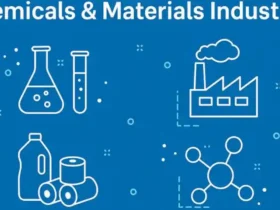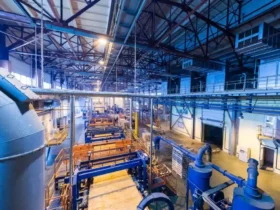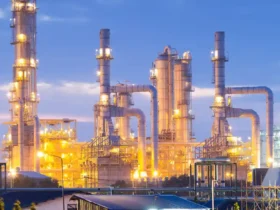
Quality control (QC) is a critical aspect of chemical processing that ensures the final product meets required standards and specifications. Whether in pharmaceuticals, petrochemicals, food processing, or specialty chemicals, consistent quality is essential for safety, efficiency, and customer satisfaction. Without robust QC practices, companies face risks ranging from financial losses to regulatory violations and harm to human health.
In this article, we explore the importance of quality control in chemical processing, the methods used, and how it contributes to overall operational success.
What is Quality Control in Chemical Processing?
Quality control refers to the systematic procedures and practices used to ensure that a chemical product meets specified quality criteria. These include:
- Purity and composition
- Physical properties (viscosity, density, melting point, etc.)
- Consistency across production batches
- Compliance with regulatory and safety standards
QC involves both in-process monitoring and final product testing, supported by detailed documentation and compliance protocols.
Why Quality Control Matters
1. Ensures Product Consistency
One of the main goals of QC is to maintain uniformity in chemical products. Even small variations in composition or properties can affect performance and usability.
- For pharmaceuticals, inconsistencies can impact drug efficacy or cause adverse effects.
- In paints or coatings, variation in pigment or viscosity can affect application quality.
By maintaining consistency, manufacturers build trust with customers and reduce the likelihood of returns or complaints.
2. Protects Consumer Safety
In chemical industries, particularly in food, cosmetics, and pharma, QC ensures products are safe for use or consumption. Contaminants or incorrect formulations can lead to serious health risks.
- QC identifies impurities, unwanted reactions, or hazardous residues that may compromise safety.
- Rigorous testing ensures the product meets safety thresholds set by regulatory agencies like the FDA, EPA, or OSHA.
3. Compliance with Regulations
Chemical processing industries are subject to strict regulations. QC ensures products comply with standards from organizations such as:
- ISO (International Organization for Standardization)
- FDA (Food and Drug Administration)
- EPA (Environmental Protection Agency)
- REACH (Registration, Evaluation, Authorization and Restriction of Chemicals)
Regular quality checks prevent legal issues, fines, and product recalls.
4. Reduces Waste and Saves Costs
By catching deviations early, QC helps minimize raw material waste and reduce rework or batch rejection.
- In-process controls allow operators to make adjustments before problems escalate.
- Less waste means more efficient use of resources and improved profitability.
Investing in QC pays off by reducing overall production costs.
5. Improves Operational Efficiency
Efficient quality control streamlines production by:
- Identifying bottlenecks or equipment issues
- Providing feedback for continuous improvement
- Enabling faster troubleshooting through root cause analysis
Data from QC systems can inform predictive maintenance and process optimization.
Key Components of a Quality Control System
1. Standard Operating Procedures (SOPs)
SOPs define the methods and conditions for production and testing. They ensure consistency and accountability across processes.
2. Sampling and Testing
QC involves collecting samples from raw materials, in-process batches, and finished products. These are tested for key parameters like:
- Chemical composition
- pH level
- Moisture content
- Impurity levels
3. Analytical Instruments
Advanced instruments are used to perform precise chemical analyses:
- Spectrophotometers (UV/Vis, IR)
- Chromatography (HPLC, GC)
- Mass spectrometry
- Titrators
These tools help identify even trace levels of contaminants or deviations.
4. Documentation and Reporting
Accurate records are maintained for every QC test. This documentation:
- Supports traceability
- Demonstrates regulatory compliance
- Aids in internal audits and reviews
Digital QC systems now allow real-time data logging and easy retrieval.
5. Training and Personnel
Quality control depends on trained and qualified personnel who can:
- Operate complex instruments
- Follow test protocols
- Interpret results correctly
Regular training ensures teams stay updated with the latest standards and techniques.
Common Quality Control Techniques in Chemical Processing
- Titration: For determining concentration of reactants
- Spectroscopy: For identifying chemical structures and impurities
- Chromatography: For separating and analyzing complex mixtures
- Gravimetric and volumetric analysis: For measuring mass and volume changes
- pH and conductivity tests: For determining solution properties
Each technique is chosen based on the nature of the product and the parameters to be controlled.
Challenges in Quality Control
While QC is essential, it also presents challenges:
- High cost of analytical equipment and skilled labor
- Time-consuming testing procedures
- Inter-lab variability in results
- Adapting QC protocols for new product formulations
To overcome these, companies are adopting digital tools, automation, and data analytics.
Future Trends in Quality Control
Modern QC is evolving with the integration of technology:
- Automated testing systems reduce human error and speed up analysis.
- Artificial intelligence helps interpret complex data patterns.
- Real-time monitoring allows immediate adjustments during production.
- Cloud-based QC platforms offer remote access and scalability.
These innovations are making QC more efficient, accurate, and agile.
Quality control in chemical processing is more than just a regulatory requirement—it’s a cornerstone of safe, efficient, and competitive manufacturing. By ensuring product consistency, safeguarding health, reducing waste, and maintaining compliance, QC adds significant value to operations.
As the chemical industry continues to advance, so too must its approach to quality control. Embracing modern tools and technologies will help manufacturers meet growing demands while maintaining high standards of safety and reliability.








Leave a Reply